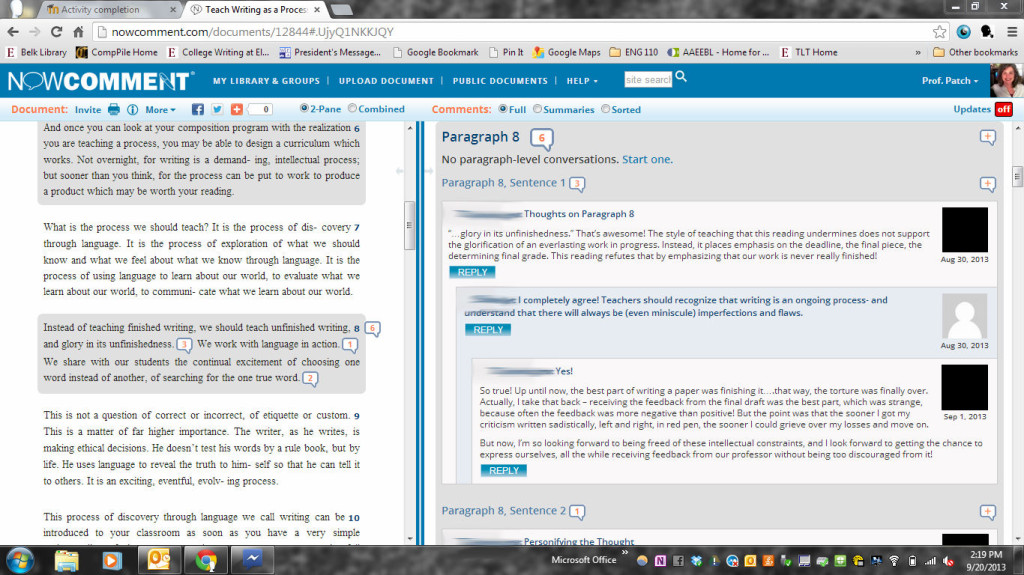Making the flip: Professor uses annotated online readings to open class time to writing
 Professor Paula Patch of the English department took part in the Teaching and Learning Technologies (TLT) summer course on flipped instruction. For Patch, flipped instruction seemed beneficial for her College Writing class so she could use more class time to hone her students’ writing skills.
Professor Paula Patch of the English department took part in the Teaching and Learning Technologies (TLT) summer course on flipped instruction. For Patch, flipped instruction seemed beneficial for her College Writing class so she could use more class time to hone her students’ writing skills.
“The first year writing course is condensed into one semester, so time constrained a lot of what we’re trying to do,” Patch said. “I wanted to free up class time to do more. I also wanted to provide more guidance when the students read those more difficult texts.”
Patch decided to make the readings at home more interactive and informative. She uses the website NowComment, a free web application which allows her to monitor the real-time discussion between her students as well as guide her students to focus on certain aspects of the reading.
“It is much easier,” Patch said. “I use NowComment to put the readings online. I can comment when I want [the students] to pay attention [via] a split screen. The students then reply right there in a social-discussion forum.”

On the left is the reading Patch assigned her students. On the right, her students comment on that particular section of the reading.
NowComment also allows Patch to capture pieces of the conversation between her students or download a report about their comments, so she can bring up common points of interest or confusion in class. But the majority of her class time is dedicated to her students’ writing projects. They are practicing writing in class, which is what the class was intended for.
Patch has found other ways to utilize NowComment beyond her College Writing course. She uses the application in her Writing Studies Survey course. Her students annotate articles online and the class can see how other people responded to the same text. Patch also believes this could be an effective tool to collaborate with students and faculty on various projects.
Patch does not lead a lecture based course, so the lecture-to-video-modules model for flipped instruction did not work for her. Instead, she thought of what she needed to adjust to make her ENG 110 course more effective and how technology could help.
“My favorite part of the [flipped] discussion is ‘hacking’ – what problem do I have in my teaching that could be solved using time and technology?” Patch said. “I was thinking ‘Is there a way technology can engage students outside the class?’ I prioritized my needs and the readings were the biggest needs for the ENG 110 class.”
Patch understands that some educators are hesitant to try flipped instruction, but she encourages her fellow faculty members to think of using flipped instruction in small segments rather than to change the entire class environment.
“My mantra is you don’t have to flip everything,” Patch said. “You can do it in pieces. It’s not about flipping the classroom inside out.”
If you’re interested in learning how to use flipped instruction in your course, contact Teaching and Learning Technologies at 336.278.5006 or tlt@elon.edu to schedule an individual consultation.
 Follow
Follow

